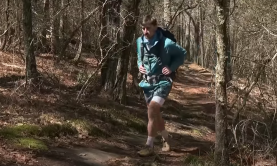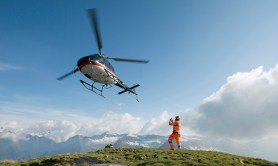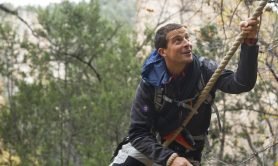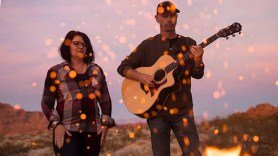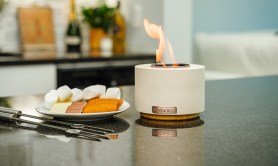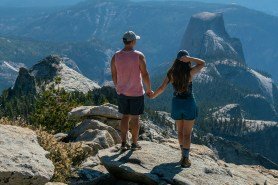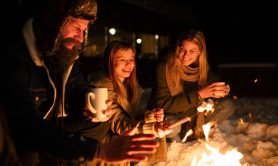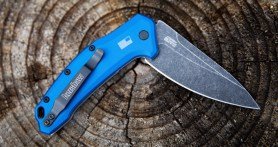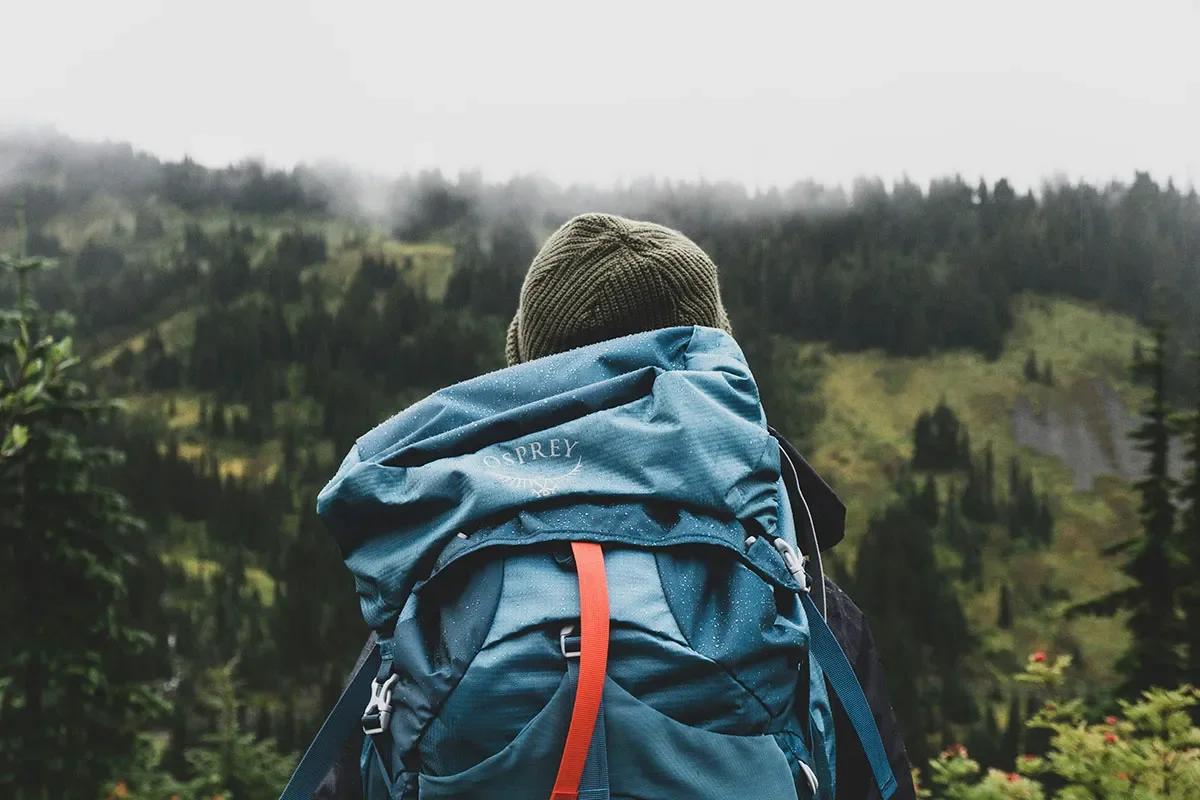

Finding the right backpacking sleeping bag is important because how you sleep affects your body and your state of mind for the next day’s hike. If you really want to show up on the trails, show yourself some love and find the best sleeping bag in your budget before you head out for your next backpacking adventure.
If you can foot the bill, the Western Mountaineering Versalite should be at the top of your list. For more affordable options, consider the Kelty Cosmic 20 (down) and the REI Co-op Trailmade 20 Sleeping Bag (synthetic).
We’ve compiled some suggestions for the best backpacking sleeping bags across several categories, including best for extreme cold, best ultralight, and best quilt/sleeping bag combo. Take a look through our suggestions, the Buyer’s Guide for some additional help, and our FAQs to get your questions answered.
This post contains affiliate links. Outdoors.com may earn a commission when you make a purchase through these links. Thank you for your support.
Our Top Picks for Backpacking Sleeping Bags
- Best Overall (Down): Western Mountaineering Versalite Sleeping Bag
- Best Budget Down: Kelty Cosmic 20 Sleeping Bag
- Best Synthetic: Big Agnes Anthracite 20 Sleeping Bag
- Best Budget Synthetic: REI Co-op Trailmade 20 Sleeping Bag
- Best for Extreme Cold: Feathered Friends Snowbunting EX 0 Sleeping Bag
- Best Ultralight: Sea to Summit Spark Down 45F Sleeping Bag
- Best Quilt Sleeping Bag: Enlightened Equipment Revelation Quilt
Best Overall (Down) – Western Mountaineering Versalite Sleeping Bag
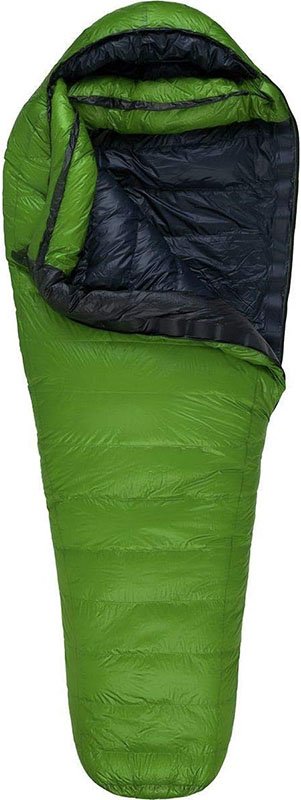
Specs:
- Packed weight: 1 lb 14 oz (for the 5’6″ version)
- Insulation type: Down
- Temperature rating: 10 degrees Fahrenheit
The Western Mountaineering Versalite is rated down to 10°F thanks to its 850-fill goose down, which is lofty and compressible. It’s a mummy-shaped down bag with an exceptional warmth-to-weight ratio, weighing just 1 pound 14 ounces for the short version.
This backpacking bag comes in a range of options, including three sizes (5’6″, 6′, and 6’6″) and two zipper configurations for each length (left zip and right zip). That’s six potential configurations to ensure you’re getting the most comfortable sleeping bag for you.
Western Mountaineering’s ExtremeLite shell fabric has a high thread count, adding to the bag’s durability, as well as other features like interlocking draft tubes and a down-filled collar. The top half is nice and wide, which allows for layering against cold air when needed.
If you can get past the sticker shock, the Versalite is a well-loved bag that’ll do its job well.
Best Budget Down – Kelty Cosmic 20 Sleeping Bag
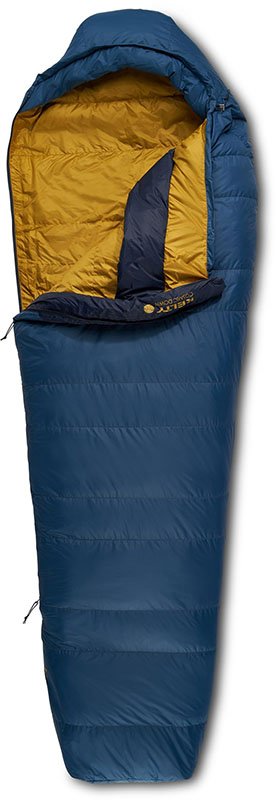
Specs:
- Packed weight: 2 lbs 7 oz
- Insulation type: Down
- Temperature rating: 20 degrees Fahrenheit
The Kelty Cosmic 20 is a more budget-friendly down bag priced at a little over $100. It has lofty 550-fill-power down rated for 20°F and up. It weighs a little over 2 pounds for the shortest version, and it also comes in a long version.
Along with its DWR (durable water repellent)-treated water-resistant nylon shell, the Kelty Cosmic 20 offers a trapezoidal baffle to improve thermal efficiency. It also includes a wind-blocking draft collar, a full draft tube, an internal zippered stash pocket, and a stuff sack.
The Cosmic 20 is a fantastic down sleeping bag, especially for backpacking during shoulder seasons, and it won’t cost an arm and a leg.
Best Synthetic – Big Agnes Anthracite 20 Sleeping Bag
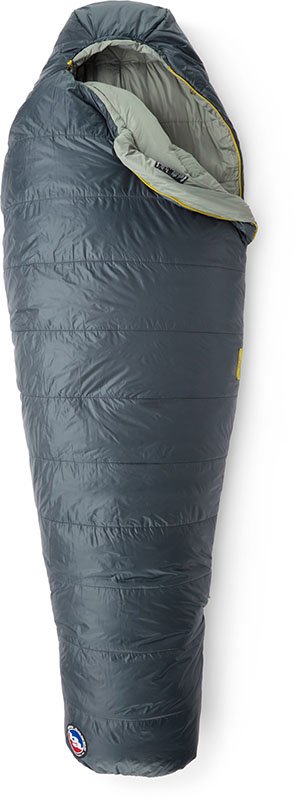
Specs:
- Packed weight: 2 lbs 12 oz (for regular)
- Insulation type: Synthetic
- Temperature rating: 20 degrees Fahrenheit
The Big Agnes Anthracite 20 is a lightweight mummy-style bag with Fireline PRO Eco Recycled synthetic fibers designed to mimic the high loft, packability, and thermal efficiency of down. It has a contoured hood, an oversized anti-draft collar, interior fabric loops to secure a liner, exterior loops for connecting it to your pack, and a stuff sack.
The shell fabric is made from recycled ripstop, and both the shell and the lining have a PFC-free water-repellent finish.
The Anthracite 20 comes in both a regular and long version.
Best Budget Synthetic – REI Co-op Trailmade 20 Sleeping Bag
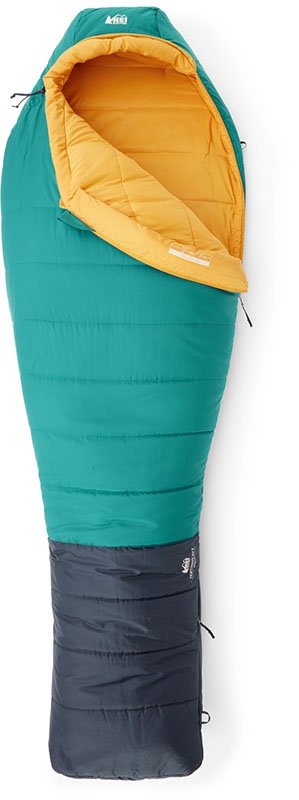
Specs:
- Packed weight: 3 lbs (for short)
- Insulation type: Synthetic
- Temperature rating: 21 degrees Fahrenheit
For just under $100, you can get a comfy sleeping bag light enough for backpacking. REI Co-op offers the Trailmade 20, a synthetic bag rated to 21°F that starts at 3 pounds. Yes, there are lighter bags, and yes, there are warmer bags, but at this price point, it’s a great option.
The REI Co-op Trailmade 20 is a mummy bag with quilt construction to minimize cold spots, a DWR-treated polyester shell made from recycled materials, a face muffler, a contoured hood, and a full draft tube to shield you from cold air.
The Trailmade also features an external zippered stash pocket and a stuff sack. It doesn’t boast the same durability as the more premium options on this list, but as a budget buy, the REI Co-op Trailmade is a good bang for your buck.
Best for Extreme Cold – Feathered Friends Snowbunting EX 0 Sleeping Bag
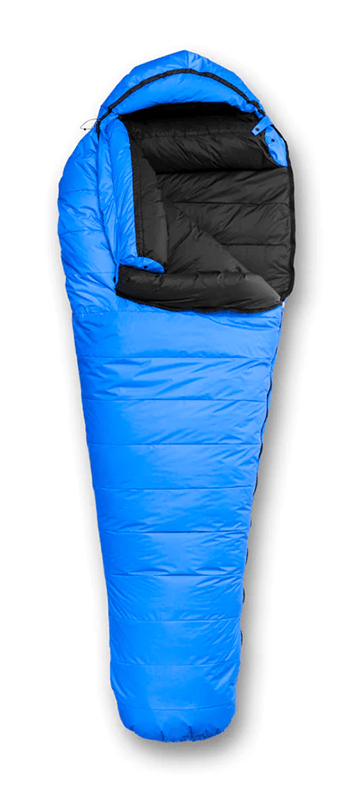
Specs:
- Packed weight: 2 lb 13 oz (for regular)
- Insulation type: Down
- Temperature rating: 0 degrees Fahrenheit
Described as “exceptional” by reviewers, this premium option from Feathered Friends offers 900+ goose down and is rated down to 0°F. The Snowbunting EX 0 is a mummy-shaped bag with a #5 YKK two-way zipper and locking sliders, a Pertex Shield EX water-resistant and breathable shell treated with DWR, a contoured hood for warmth, and a collar to prevent breath condensation from getting inside your bag.
The Feathered Friends Snowbunting EX 0 is long compared to most sleeping bags; it’s regular length accommodates backpackers up to 6′ tall, while the long version accommodates backpackers up to 6’6″.
Made in Seattle, Feathered Friends bags are known for quality and effectiveness in cold weather. If you’ll be facing extreme cold, the Snowbunting EX 0 is an investment in your future warmth and comfort. It includes a storage bag and stuff sack.
Best Ultralight – Sea to Summit Spark Down 45F Sleeping Bag
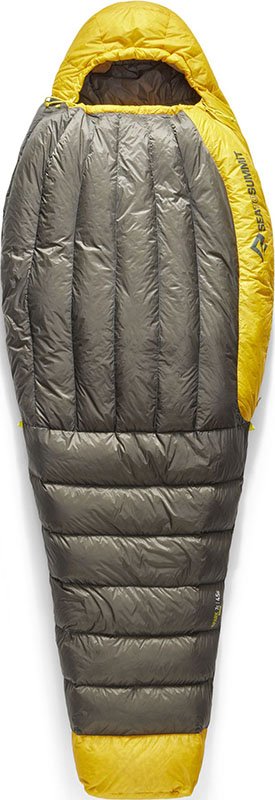
Specs:
- Packed weight: 12.8 ounces
- Insulation type: Down
- Temperature ratings: 45 degrees Fahrenheit
Most backpacking sleeping bags can’t touch this one in terms of weight savings. The Sea to Summit Spark Down 45F bag weighs just 12.8 ounces, making it our top pick for ultralight backpacking. Like other ultralight bags, this down bag prioritizes weight and packed size. This one has a compressed volume of just 2.4 liters.
The Sea to Summit Spark 45F is a mummy-style bag with RDS-certified 850+ fill-power goose down treated with non-PFC Ultra-Dry Down. It has a water-repellent hood and foot box, a zipper draft tube, snag-free zippers, breathable 10-denier liner fabric, and a 10D shell with a non-PFC DWR.
It comes with a compression sack and is available in both a regular and long version. Sea to Summit also offers the Sea to Summit Spark Down in other temperature ratings—0°F, 15°F, and 30°F, as well as this one, the 45°F.
Best Quilt Sleeping Bag – Enlightened Equipment Revelation Quilt
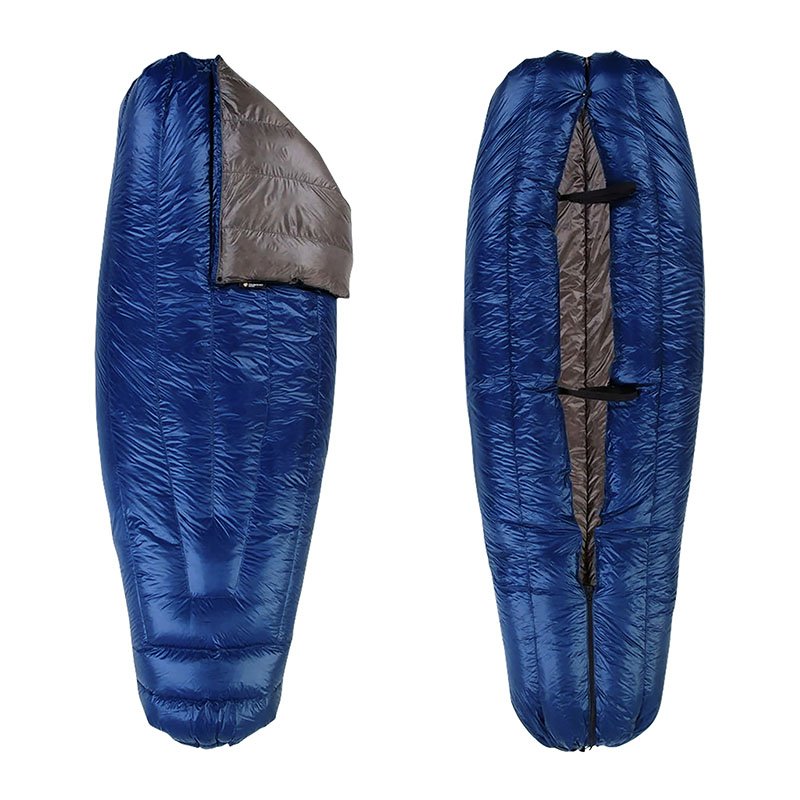
Specs:
- Packed weight: 19.18 ounces and up
- Insulation type: Down
- Temperature rating: 0-50 degrees Fahrenheit
When versatility and configurability are the name of the game, get yourself an Enlightened Equipment Revelation Quilt, which comes in tons of configurations, depending on what you need. You can customize the fill power (either 850 or 950), the temperature rating (0°F, 10°F, 20°F, 30°F, 40°F, or 50°F), the length and the width (short/regular, regular/regular, regular/wide, or long/wide), the fabric, and you can even add an optional draft collar.
On warm nights, use the Revelation Quilt as a blanket. When it’s chillier, zip the foot box closed (it has a 1/4 length zipper) and cinch it up into a sleep sack. Don’t forget that with a quilt, you’ll need a sleeping pad between you and the ground.
To save weight, the quilt does not have a full-length zipper or a built-in hood. It starts as light as 19.18 ounces. If the above options aren’t enough, you can order this bag custom with even more options for sizes, fabrics, and colors.
Buyer’s Guide
Consider the following when shopping for a backpacking sleeping bag.
Packed Size and Weight
Perhaps the most important consideration when shopping for a backpacking sleeping bag is finding something that will fit in or on your pack. Check the packed size and weight of the bag you’re considering to make sure it suits your needs.
If you’re an ultralight backpacker, check out the Sea to Summit Spark Down 45F Sleeping Bag, which weighs just 12.8 ounces.
Sleeping Bag Temperature Ratings
A sleeping bag’s temperature rating helps consumers pick a bag that’s well suited for the air temperature in which they’ll be sleeping. Consider how cold it may get where you’ll be backpacking to help you decide what temperature ratings appeal most to you.
To put it simply, a sleeping bag rated 15 is designed to keep someone warm inside even if it’s 15°F outside. For a full explanation, check out our guide to sleeping bag temperature ratings.
Insulation Types
Sleeping bags are typically insulated using down insulation or synthetic insulation designed to mimic the properties of down. Down offers a superior warmth-to-weight ratio and compresses down small, making it a great option for backpacking. However, down bags don’t hold their full insulating properties when wet.
Synthetic insulation, on the other hand, won’t lose its ability to insulate if it becomes wet. If it does become wet, it’ll dry more quickly than down feathers do. The down side is that synthetic fill typically weighs more and compresses less.
While synthetic fill in general costs less than down fill, there are budget and premium bags for both insulation types.
Shape and Unfolded Dimensions
Typical sleeping bag shapes include rectangular bags and mummy bags. Rectangular bags are shaped like a rectangle, while mummy sleeping bags taper toward the bottom. The traditional mummy bag is more thermally efficient than a rectangular bag because it has less empty space in the foot box.
Unfolded dimensions will help you decide whether a sleeping bag will work for your body. If you’re approaching 6 feet or taller, most bags will be too short. Look for a sleeping bag that comes in a “long” version so you’re not cramped up all night.
Durability and Water Resistance
Sleeping bags need to be durable to keep up backpackers. Features like reinforced stitching, high-quality zippers, and durable fabrics are non-negotiable. Ensure you’re selecting something with an outer shell fabric that is water and wind resistant, preferably with a DWR coating.
Features and Sustainability
The best sleeping bags have some bonus features like a pillow pocket, an internal stash pocket, an anti-snag zipper design, and draft tubes to prevent heat loss through zippers. You may also look for bags with hoods to help hold heat in around your head and options to connect the bag to other elements of your sleep system, such as insulated sleeping pads or camping mattresses.
If sustainability is important to you, look for sleeping bags that feature recycled fabrics, RDS-certified down, and/or PFC-free DWR.
Budget
When you’re car camping, saving weight in your outdoor gear isn’t the priority, but when you’re backpacking, packability and lightness is king, and that often comes at a price. In fact, you can spend a small fortune on an ultralight sleeping bag for backpacking.
A premium bag may be what you want and need. However, you can find a high-quality sleeping bag without spending a small fortune. The REI Co-op Trailmade 20 is our top pick for the best backpacking sleeping bag on a budget.
Frequently Asked Questions
What is the difference between a backpacking sleeping bag and a regular sleeping bag?
A backpacking bag is designed to be lightweight and to pack down small, while regular sleeping bags are more suited to car camping. Backpacking bags may forego extra features and are more likely to use down feathers as the bag insulation.
For the best sleeping bags beyond backpacking, check out our guide.
Should I use a sleeping bag or a quilt for backpacking?
Some backpackers choose to use a backpacking quilt instead of a traditional sleeping bag, because they quilts can be lighter, more compact, and more versatile. Traditionally, sleeping bags were the warmer choice, but quilt/sleeping bag hybrids like the Enlightened Equipment Revelation Quilt combine the best of both worlds.
How do I choose the right temperature rating for a backpacking sleeping bag?
Your best bet is to select a bag with a rating that’s as low or lower than the coldest temperature you may face while backpacking. Factor in whether you tend to be a warm sleeper or a cold sleeper. Read more about sleeping bag temperature ratings here.
What type of insulation is best?
Down insulation offers an ideal warmth-to-weight ratio, plus compressibility. But remember, down bags may lose insulating power when wet. Synthetic fill can also get the job done, often at a slightly lower price point and a slightly higher packed weight than down fill.
There are pros and cons to each insulation type, and only you can decide what will work best for you.
How do I know if a sleeping bag will fit inside my backpack?
Check the packed size and weight of a sleeping bag to determine whether it’ll fit inside your pack or be suited to clip onto your pack.
How do I clean my backpacking sleeping bag?
Consult the manufacturer’s instructions before cleaning your bag. Synthetic sleeping bags can typically go in the washing machine between uses.
Do I need a special sleeping bag for winter backpacking?
Use temperature ratings as your guide as you select a bag for your winter backpacking adventures. Backpacking sleeping bags made for lower temperatures will be a little heavier and more expensive, due to the higher fill power.
If you go backpacking in very warm and very cold temperatures, it may be worth it to invest in a warm sleeping bag for cold weather and a lighter sleeping bag or quilt for trips full of warm nights.
Are sleeping bags unisex?
You might come across “men’s” and “women’s” bags while shopping for sleeping bags. Women’s bags are designed for smaller/shorter people, while men’s bags are designed for larger/taller people.
Most people can use unisex bags with no problem, but a bag designed for your height might be a more perfect fit. Check the unfolded dimensions before buying.
Final Thoughts
When you’re sleeping on the go, you need a sleeping bag that’s light and compact without sacrificing comfort or warmth. Whether you’re looking for a premium down sleeping bag, a budget bag, or maybe even a quilt that doubles as a sleeping bag, there’s an option out there for you.
For backpackers who go out regularly and want an investment piece, consider the Western Mountaineering Versalite. For cold-weather backpackers, take a look at the Feathered Friends Snowbunting EX 0 Sleeping Bag. For those in the ultralight camp, check out the Sea to Summit Spark Down Sleeping Bag 45F or the Enlightened Equipment Revelation Quilt.


